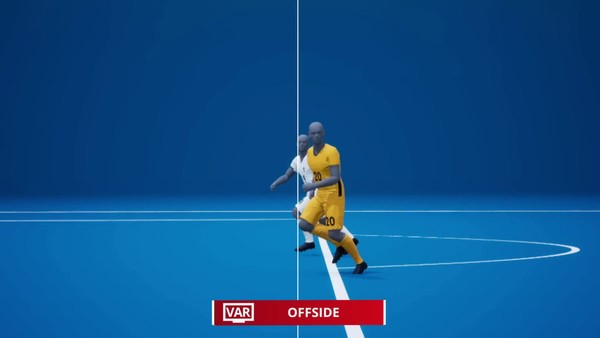FIFA announced that semi-automated offside technology (SAOT) will be used at the 2022 FIFA World Cup in Qatar. The technology will offer help to the referees on the field to make faster and more accurate offside calls. Video assistant referees or VAR system worked successfully during the 2018 World Cup, and FIFA tried very hard to improve on the system. The new technology uses 12 tracking cameras mounted on the roof of the stadium to track the location of the ball and the players. The camera will identify their positions 50 times per second.
By combining the player and ball tracking data and with the help of artificial intelligence, SAOT gives offside alert to the video match officials inside the video operation room whenever the ball is kicked to the player who was in an offside position. Video match officials will review the decision by checking the kick point and offside line. This process happens within a few seconds and helps the referees to make offside decisions more accurately.
Furthermore, Al Rihla, the official ball for the World Cup will have a sensor inside the ball to help the referees make accurate offside calls. When a player kicks the ball, the sensor will send the data to the video operation room, allowing a more accurate detection of the kick point.
The technology is already making a difference in Qatar. During the opening match, Equador’s goal was declared offside using the new system. During the match between Argentina and Saudi Arabia, three early goals by Argentina were called offside by the system, and Saudi Arabia eventually became the winner of the match. Such calls would have been impossible without the help of the new technology.
By. Ian Kang


